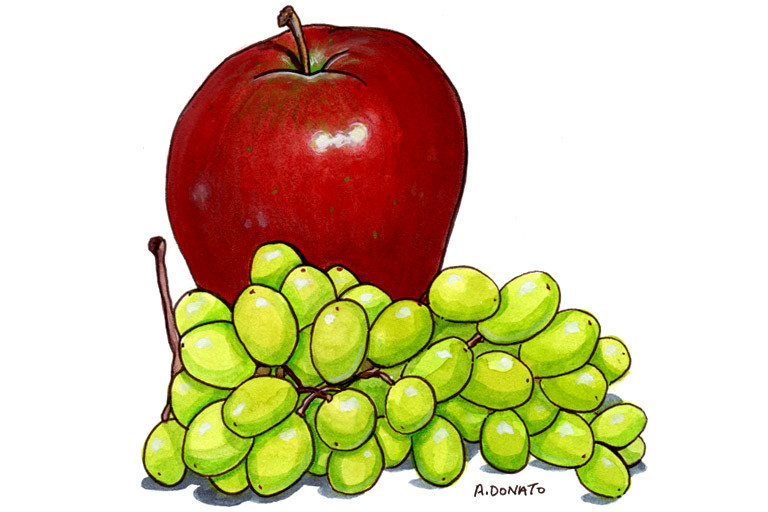
Common Names
- Glucarate
- Calcium-D-glucarate
- Calcium saccharate
- Calcium-D-saccharate
For Patients & Caregivers
Tell your healthcare providers about any dietary supplements you’re taking, such as herbs, vitamins, minerals, and natural or home remedies. This will help them manage your care and keep you safe.
What is it?
Although lab studies suggest anticancer effects, calcium glucarate has not been shown to treat or prevent cancer in humans.
Calcium glucarate is absorbed in the intestine and converted into a molecule that inhibits beta-glucuronidase, to possibly increase elimination of toxic substances. For example, rats exposed to carcinogens and then fed calcium glucarate had fewer tumors and slower tumor development than rats that were not fed this substance. Calcium glucarate also increases estrogen elimination, which may reduce estrogen levels in the body. This explains its use as supportive care among estrogen-sensitive breast cancer patients. However, positive results in animal studies do not always mean a similar approach will work in humans. In addition, no clinical trials have tested whether calcium glucarate has these effects in humans.
What are the potential uses and benefits?
- To detoxify the body
Lab and animal studies suggest calcium glucarate speeds up elimination of carcinogens from the body. Human studies have not been conducted. - To prevent and treat cancer
A handful of animal studies show that calcium glucarate can slow tumor development and reduce their number in rats exposed to carcinogens, but human data are lacking. Only one small study in humans suggests that calcium glucarate supplementation might reduce cancer risk for some individuals. More well-designed studies are needed to confirm such effects.
For Healthcare Professionals
Scientific Name
Clinical Summary
Calcium glucarate is the salt and commercial form of glucaric acid, which occurs naturally in a variety of foods including apples, oranges, broccoli, and spinach (1). Calcium glucarate and other derivatives have been used to prevent and treat cancer. Patients with breast cancer sometimes self-medicate with calcium glucarate supplements following surgery or adjunctive treatments. The glucarate component, not the calcium, is thought to account for its activity. Following administration, glucarate is converted to D-glucaro-1,4-lactone, which inhibits beta-glucuronidase (4).
In vitro and animal studies suggest inhibition of beta-glucuronidase may prevent carcinogenesis (5), as well as initiation and promotion of cancer cells (3) (6). Increased elimination of carcinogens and hormones including estrogen has also been shown (2). In colon (7) and lung (8) cancer models, calcium glucarate exerted chemopreventive effects in the post-initiation phase of carcinogenesis. Dietary calcium glucarate also inhibited oral carcinogenesis (9). Topical calcium glucarate suppressed tumor development in murine skin tumors (6) (10) (11), and enhanced chemopreventive effects were achieved with a topical butyric acid, nicotinamide, and calcium glucarate combination (12) (13). Other preclinical data suggest topical ursolic acid along with dietary calcium glucarate supplementation could also reduce skin tumor promotion and inflammatory signaling (14).
Preliminary findings from a human study suggest that low glucaric acid levels and/or high beta-glucuronidase levels are markers of detoxification system impairment, and that calcium glucarate supplementation might reduce the cancer risk of some individuals (15). Subsequent studies have not materialized and are needed to confirm such effects.
Food Sources
Purported Uses and Benefits
- Cancer
- Detoxification
Mechanism of Action
The glucarate component, not the calcium, accounts for the activity of calcium glucarate, which is absorbed from the gut as D-glucaric acid. This is further converted to D-glucaro-1,4-lactone, which is thought to inhibit beta-glucuronidase activity (4). Beta-glucuronidase has been shown to decrease the rate of elimination of estrogen and carcinogens such as polycyclic aromatic hydrocarbons and nitrosamines by deconjugation (3). Inhibition of beta-glucuronidase activity with calcium glucarate improves excretion of metabolized estrogen and carcinogens (2). D-glucarate can also be metabolized by gut bacteria, inhibit bacterial beta-glucuronidase, and potentially alter the enterohepatic cycle.
In animal studies, calcium glucarate reduced the quantity of benzo[a]pyrene-induced lung lesions with mutated K-ras and p53 genes in the post-initiation phase via DNA adduct removal, mutagenic suppression, and anti-inflammatory activity (8). Antitumorigenic effects of topical calcium glucarate may be due to stimulated differentiation via induction of transglutaminase activity and suppression of proliferation (6), as well as inhibition of thymidine kinase and aryl hydrocarbon hydroxylase activities, thus preventing carcinogen-DNA binding (10). Enhanced chemopreventive effects by a topical butyric acid, nicotinamide, and calcium glucarate combination used on murine skin tumors occurred via induced mitochondria-mediated apoptosis, upregulated p21, and downregulated Bcl-2, mut p53 (12). In another study this combination regulated miR-203 status through epigenetic or biogenetic modulations before and after tumor development to a greater degree than each of the individual compounds (13). Reduced epidermal hyperplasia with a combination of topical ursolic acid and dietary calcium glucarate supplementation caused a marked decrease in COX-2 and IL-6 expression (14).
In a preliminary human study, calcium glucarate supplementation suppressed beta-glucuronidase levels while increasing serum glucaric acid levels (15).
Adverse Reactions
In a preliminary study, calcium glucarate was well-tolerated with no toxicity reported (15).